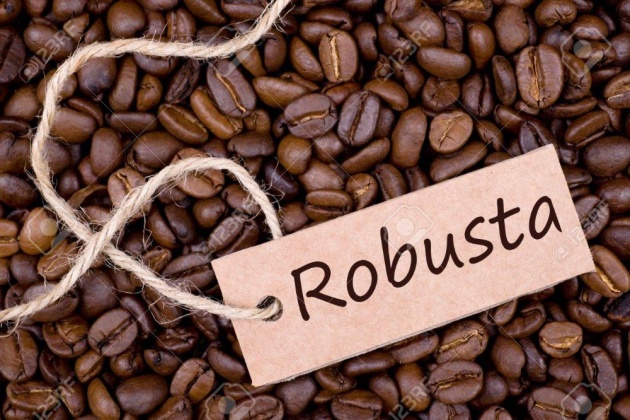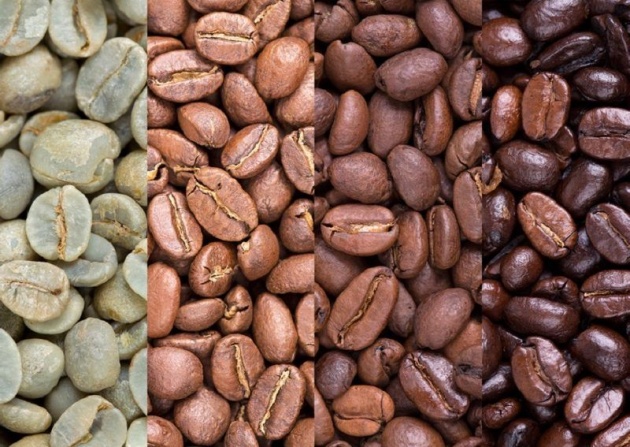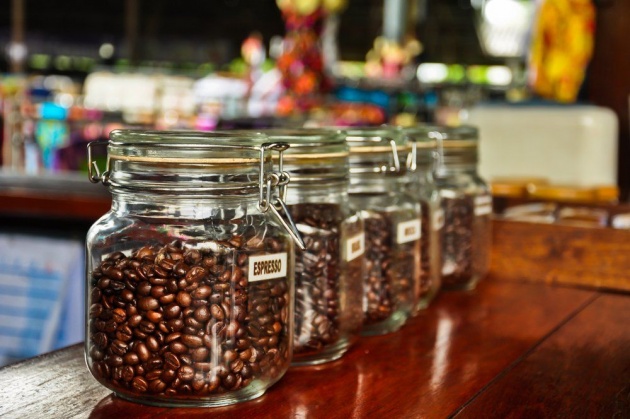
Image Credit: Free-Photos via Pixabay / Edited with Photoshop
We know that coffee contains caffeine which helps boost our energy every morning. In fact, some people are not even humans before having a shot of coffee right after waking up. I did a quick overview of its origin and it was quite fascinating. If you want to know more about its history, you can visit my two-part blog here and here. But how well do we really know our coffee?
Quick Overview
Coffee is a beverage made by brewing roasted coffee beans or seeds. The plant from which it comes from is a type of shrub native to subtropical regions of Asia and Africa--although it is now also being cultivated in Central and South America.

Image Credit: skeeze via Pixabay
Once the coffee plant berries are ready for harvesting, the flesh is removed and thrown away. The seed is actually what's important as it is the one that gets roasted later on. But, before it gets roasted, it has a grey-green color which is often referred to as green coffee. This also often the state at which coffee bean is sold and shipped--mainly because they are already shelf stable at this point.
Types of Coffee Bean
Coffee beans are not all made equal. There are different types of beans and the conditions and region where they were grown have an impact on their size, color, shape, and flavor. In fact, you can find a wide range of unique flavors and aromas produced in different regions. To find the coffee best suited for your palate, you may want to experiment on these different varietals.
There are four main types of coffee: Arabica, Robusta, Liberica, and Excelsa. However, we will focus more on the first two types as these are the most common varietals in most regions.
Arabica

Image Credit: https://nativearakucoffee.com/
Arabica coffee has a more delicate flavor and lower acidity compared to Robusta. This is the reason why it is considered superior to Robusta. However, this variety is also more costly and difficult to grow. Arabica is grown in high altitudes and is labor-intensive to grow. Additionally, it doesn't produce as much coffee bean which is why it is priced higher than Robusta.
Robusta

image Credit: https://kr.123rf.com/
Robusta coffee is much easier to grow than Arabica. It can be grown in lower altitudes and hotter climates--or places with less moisture. Robusta has less growing restrictions, but it is more acidic than Arabica and has higher levels of caffeine. It also has a stronger flavor that not everyone can appreciate. Some may even say that it has a bitter, rubbery taste. For these reasons, Robusta is more affordable than Arabica. Most cheap, mass-market commercial coffee beans are of the Robusta variety.
Different Ways to Roast Coffee

Image Credit: https://www.adelaidereview.com.au/
While coffee beans are shipped in their green state, you can't brew them in that state. They must first be roasted before you can brew them. Coffee beans must be roasted in dry heat with constant agitation to ensure balanced heating. Just like there are different types of coffee beans, there are also different ways to roast them which varies from light golden brown to dark color. The flavor, aroma, and color of coffee when it is brewed will greatly depend on how they were roasted. There are several levels of roasting coffee beans but they can be grouped into three main types: light, medium, and dark.
Light
Light roasts are only slightly roasted until they are light brown which helps lessen the roasted flavor. This allows the original flavor to remain prominent so they generally have the lightest and most delicate flavors among all kinds of coffee roasts. However, they can also be more acidic. Lightly roasted beans appear dry because they have not been heated enough to allow the extraction of oil.
Light roasts include New England Roasts, American, Cinnamon, and Half-City.
Medium
Medium-roasted beans are roasted just well-enough until it has a chocolatey color but not long enough until their oil start coming out--so they still have a dry surface. Medium roasts also tend to have a much fuller flavor and are less acidic than light roasts--which makes it a popular choice among consumers. In fact, most coffee aficionados prefer this type of roast that's why it is considered the most popular kind of roast within the major commercial coffee market.
Medium roasts are also known as Breakfast, Medium, or Regular Roast.
Dark
Unlike light and medium roasts, dark-roasted coffee beans are roasted until the oils begin to rise to the surface of the bean and their sugar starts to caramelize. The bean may have a slight sheen or oily appearance depending on how dark it was roasted. Flavorwise, dark roasts are very strong and even have a smoky taste to them. In some cases, you may even taste a hint of spiciness. These roasts have a low acidity level but are often described as bitter. The strength of the roasted flavor can overpower the original flavor of the coffee bean--and this is why this roasting method is used for lower quality beans.
Dark roasts include Viennese, French, Italian, and Espresso.
Blends
It's also possible to achieve a unique flavor that does not fall under one category. Many roasters create a custom blend by combining two or more roasting levels. This technique produces a one-of-a-kind flavor that cannot be achieved with just a single roast.
Here's a video from HawaiiTravel explaining the difference between light, medium, and dark roasts.
Video Credit: HawaiiTravel via Youtube
Proper Storage of Coffee

Image Credit: http://www.saluparis.com/
Did you know that how you store your coffee also affects its flavor when it is brewed? When storing your coffee, you may want to avoid heat, light, oxygen, and moisture when storing your coffee to help preserve its natural flavor. This is the reason why most commercial coffee is sold in vacuum-sealed bags with one-way valves as these allow the gasses to escape but still keeps oxygen out. Extra care must be taken in order to keep the beans fresh once the seal is broken on the bag.
With that said, you may want to transfer the coffee beans in an airtight container and store it in a dark, cool, and dry place. Keeping coffee beans inside the refrigerator or freezer may work for some people--or so they claim--but this can actually present other problems. Coffee beans, when stored inside the fridge, may be exposed to excess humidity and circulating air. It may also end up absorbing flavors from the other contents of your fridge. This is especially true if you like keeping food items with very strong flavors and smell such as kimchi.
Final Thoughts
Well, I hope that helped shed some light on how we can differentiate good quality coffee beans with the not so good ones. Now I know how to choose the best coffee beans the next time I go buy me some coffee. Of course, I'm not talking about the instant coffee kind--which I'm now guessing is of the lowest coffee bean quality judging by its bitterness and acidity level.
~~oO0Oo~~oO0Oo~~oO0Oo~~
Thanks for reading! Have a wonderful day ahead of you and keep smiling. :)
Written by Chineyes for bitLanders
For more quality blog posts, you may visit my page
Not yet on bitLanders? Sign up now and be rewarded for sharing ideas, photos, and videos!



